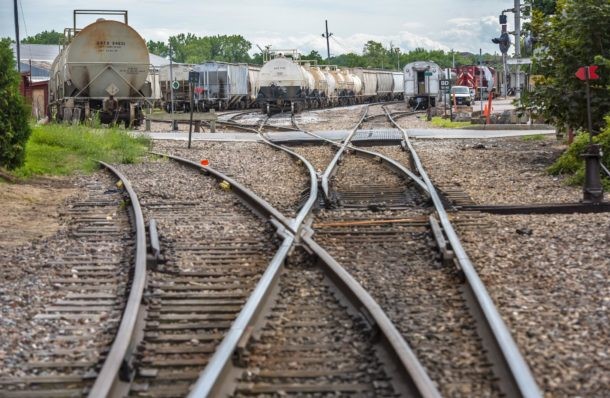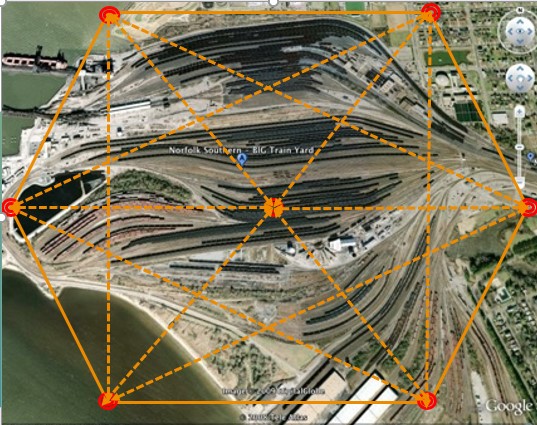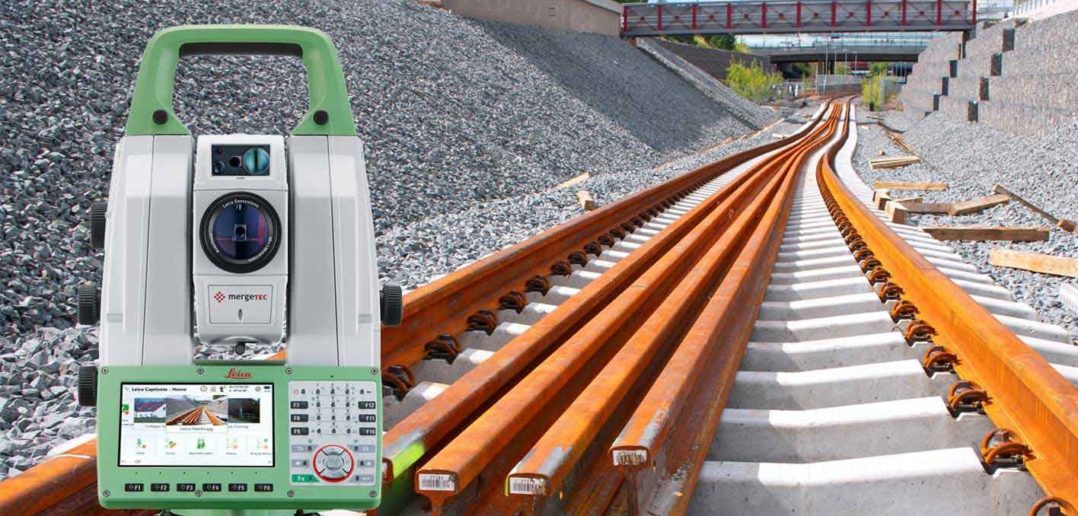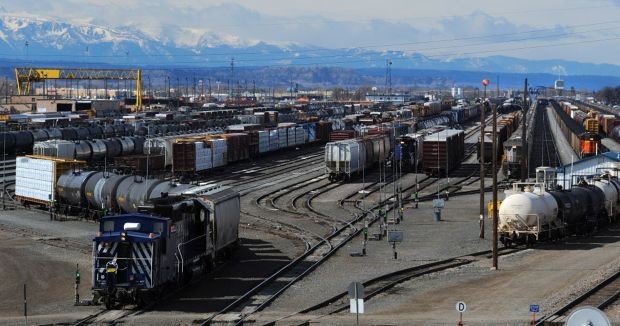Railyards may be the most challenging assets of any rail system, whether passenger, freight or commuter.
Railroads are a living and breathing entity, and every load and car finds its way into a yard at some point. In a yard, everything moves over time; rarely is something there for a long time.
Maintaining, repairing and rebuilding a yard is like open-heart surgery.
Switches are the valves with arterial lines in and out. System failures and mistakes will stop the arterial flow throughout the system.
Railroads can rarely afford to completely close a rail yard for an extended time. With its moving parts and near-constant activity, a yard represents the most arduous track maintenance and renewal tasks, ranging from track geometry to railcar clearance to other trackwork.
Close is not good enough; companies need confidence in their measurements.

It starts with a control point.
Survey control is a physical point location, and a good control network must be visible from anywhere on the site.
Knowing where infrastructure and yard elements are located at any given moment is crucial to the proper operation of a train yard. This can only be accomplished by quality, repeatable measurements from survey control points, generally monuments in the ground or other fixed structures.
The survey point is the basis for every measurement. It will help maintain the original design, and it enables a yard’s expansion.
It allows any user – whether a contractor, surveyor or maintenance worker — to produce good results.
While no measurement is exact, control has to account for that.
Control points are not just for surveyors. Maintenance teams and contractors can use these measurements for their work.

Consistency is key.
Many railroad methods have been in use since the 1800s. While past methods still work today and modern methods are based on and built on existing methods, measurement techniques are changing.
Consider something as basic as distance measurements. At one time, workers used chains for measurement, but at least three different types of chains were used.
The result was the potential for different results based on which chain was used.
Using common systems creates a level of confidence in the results. It allows anyone at any point in time to return and repeat the measurements with certainty.
However, even today, all instruments are not the same. Since no measured value is exact, every measurement has an error. Knowing how much is allowable is crucial to the calculations.
Think about going out to measuring out a length; will you use a tape measure, and at what temperature? What kind of tape – vinyl or steel? Or using a laser from a robotic total station? They may look the same, but they’re not going to give the same result.

Why is this important?
Railyards have a finite amount of space, and railroads want to optimize that space to maintain efficiency and operations. When the foundation starts to shift, it affects the flow and safety of the yard.
Everything changes the yard, from the weather to the weight of the trains themselves.
This isn’t the type of measurement that can be done with a smartphone. Starting off with the best instrumentation possible is necessary to get the most accurate data.
But not all instruments are equal. Even if they look the same and ostensibly complete the same tasks, they don’t all function the same.
When it comes to track geometry and railcar clearance, there is no room for error. Correct measurements ensure work and maintenance meets the design and allows the flow of traffic through the yard.
It’s not a matter of knowing it’s close; knowing exactly how close is non-negotiable. Mistakes could be a matter of life and death.
A control network is like a good insurance policy. Having a solid survey control ensures that all work is consistent and that everyone is aligned.
After all, safety has no room for good enough. Neither should the measurements that are required for ongoing railyard operations and maintenance.

Ryan Leonard
Manager, Rail Business Development
US/Canada














